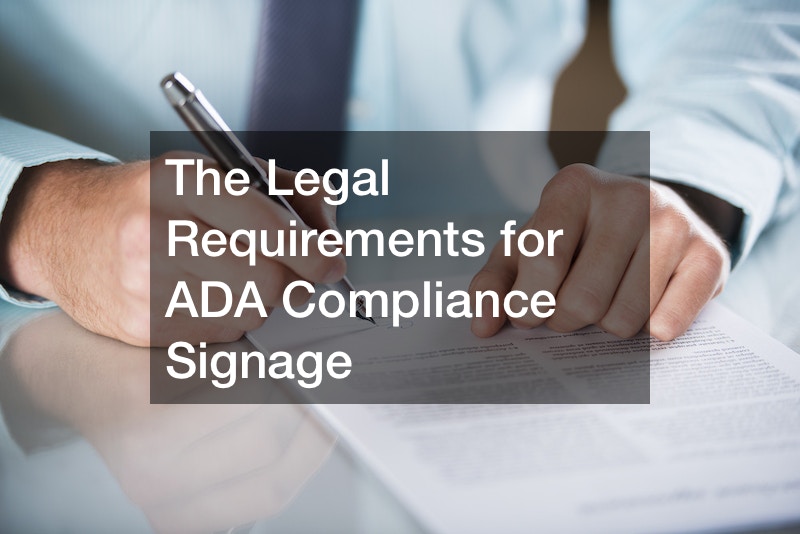

The Americans with Disabilities Act (ADA) provides greater accessibility and inclusivity across public spaces. One crucial aspect of ADA compliant signage is vital in allowing people with disabilities to navigate and interact with their surroundings efficiently. Here’s a closer look at the legal requirements for ADA compliance signage:
- Clear and Readable: ADA-compliant signage must be clear and easily readable. This entails using a sans-serif font, appropriate sizing, and high contrast between text and background.
- Pictograms and Icons: Incorporating universally recognized symbols, such as restroom icons or wheelchair symbols, aids individuals with various disabilities in understanding the sign’s purpose.
- Braille and Tactile Text: Signs must include Grade 2 Braille characters and raised tactile text, enabling those with visual impairments to read the content.
- Location and Placement: Signs must be positioned in locations where they’re easily noticeable and logically guide individuals through the environment. Entrance and exit points, restrooms, elevators, and stairways are common placement areas.
- Contrasting Colors: ADA compliant signage requires a high contrast between text and background colors. This aids people with low vision in distinguishing the content.
- Non-Glare Finish: To prevent glare that might hinder readability for individuals with visual impairments, signage must have a non-glare finish.
- Restroom Signage: Restroom signs must include both pictograms and text to indicate the appropriate gender and accessibility features.
- Accessible Routes: Signage must indicate accessible routes for wheelchair users and individuals with mobility challenges, ensuring they can navigate public spaces with ease.
.


